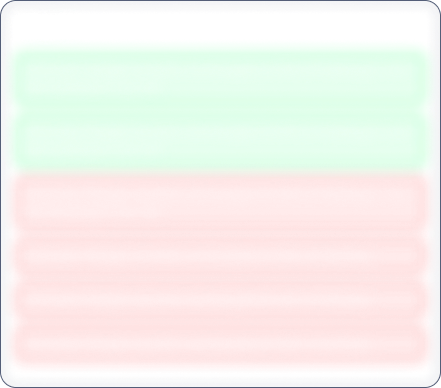Year End Sale 50% off
Agarwal Toughened Glass India

No Data Available
Investor Sentiment
Agarwal Toughened Glass India Share price and Fundamental Analysis
Key Metrics
Stock Returns
Stock Heatmap

No Stocks
Smart Score

Unlock Smart Score
See Detailed Analysis & Insights


Unlock Insights
See Detailed Analysis & Insights
Technicals
Returns Calculator
If you would have investedResearch Report
No Research Report
Corporate Action
Financials
Key Ratios
ROE
Avg ROE (3 Yrs) : NaN%
ROCE
Avg ROCE (3 Yrs) : NaN%
ROA
Avg ROA (3 Yrs) : NaN%
NPM
Avg NPM (3 Yrs) : NaN%
Dividend History
5 Year FactSheet
Documents

No Data Available
News
Agarwal Toughened Glass India Management and History
Company Management


Unlock Management Data
See Detailed Analysis & Insights
Company History
Agarwal Toughened Glass India Ltd was incorporated as 'Agarwal Toughened Glass India Private Limited', pursuant to Certificate of Incorporation dated October 30, 2009, issued by the Registrar of Companies, Rajasthan. Subsequently, Company was converted into Public Limited and the name of Company was changed from 'Agarwal Toughened Glass India Private Limited' to 'Agarwal Toughened Glass India Limited' and had received Certificate of Incorporation dated March 06, 2023, issued by the Registrar of Companies, Jaipur, Rajasthan.
From incorporation date till 2015, the Company was under the process of setting up its factory unit. From 2016 onwards, it started their 1st factory unit and the 2nd manufacturing unit started in 2022. Within the factory unit 1, float glass is simply converted into toughened glass and within factory unit 2, toughened glass is then converted into other variety of value added toughened glasses. These products fall under industries including construction, automotive, and industrial sectors, with a variety of applications such as exterior and interior spaces of residential and commercial buildings.
The Company is in the business of manufacturing toughened glass. Their product consists of toughened value addition glasses which are of various thickness and sizes. The toughened value addition glasses are obtained after processing the float glass. After processing the toughened glass, variety of glasses are further obtained such as clear toughened glass, laminated toughened glass, reflective toughened glass, tinted toughened glass, double glazing glass and frosted toughened glass.
As a result of its safety and strength, toughened glass is used in a variety of demanding applications including passenger vehicle windows, shower doors, architectural glass doors and tables, refrigerator trays, mobile screen protectors, bulletproof glass for diving masks and various types of plates and cookware etc. Also it is commonly used in doors, facades, staircases, balustrades and as partitions in the shopping malls, hospitals, airports, residential apartments, commercial apartments building etc.
The Company propose Public Offer by raising equity funds amounting to Rs 48.39 Crores and by issuing 50,40,000 Equity Shares through Fresh Issue.
Agarwal Toughened Glass India Share Price
Agarwal Toughened Glass India share price reflects investor sentiment toward the company and is impacted by various factors such as financial performance, market trends, and economic conditions. Share price is an indicator which shows the current value of the company's shares at which buyers or sellers can transact.
Agarwal Toughened Glass India Market Cap
Market capitalization of Agarwal Toughened Glass India indicates the total value of its outstanding shares. Marketcap is calculated by multiplying share price and outstanding shares of the company. It is a helpful metric for assessing the company's size and market Valuation. It also helps investors understand how Agarwal Toughened Glass India is valued compared to its competitors.
Agarwal Toughened Glass India PE Ratio
Agarwal Toughened Glass India PE ratio helps investors understand what is the market value of each stock compared to Agarwal Toughened Glass India 's earnings. A PE ratio higher than the average industry PE could indicate an overvaluation of the stock, whereas a lower PE compared to the average industry PE could indicate an undervaluation.
Agarwal Toughened Glass India PEG Ratio
The PEG ratio of Agarwal Toughened Glass India evaluates its PE ratio in relation to its growth rate. A PEG ratio of 1 indicates a fair value, a PEG ratio of less than 1 indicates undervaluation, and a PEG ratio of more than 1 indicates overvaluation.
Agarwal Toughened Glass India ROE (Return on Equity)
Return on Equity (ROE) measures how effectively Agarwal Toughened Glass India generates profit from shareholders' equity. A higher ROE of more than 20% indicates better financial performance in terms of profitability.
Agarwal Toughened Glass India ROCE (Return on Capital Employed)
Return on Capital Employed (ROCE) evaluates the profitability of Agarwal Toughened Glass India in relation to its capital employed. In simple terms, ROCE provides insight to investors as to how well the company is utilizing the capital deployed. A high ROCE of more than 20% shows that the business is making profitable use of its capital.
Agarwal Toughened Glass India Total Debt
Total debt of Agarwal Toughened Glass India shows how much the company owes to either banks or individual creditors. In simple terms, this is the amount the company has to repay. Total debt can be a very useful metric to show the financial health of the company. Total debt more than equity is considered to be a bad sign.
Agarwal Toughened Glass India Debt to Equity Ratio
The Debt-to-Equity (DE) ratio of Agarwal Toughened Glass India compares its total debt to shareholders' equity. A higher Debt to Equity ratio could indicate higher financial risk, while a lower ratio suggests that the company is managing its debt efficiently.
Agarwal Toughened Glass India CAGR (Compound Annual Growth Rate)
CAGR shows the consistent growth rate of Agarwal Toughened Glass India over a specific period, whether it is over a month, a year, or 10 years. It is a key metric to evaluate the company’s long-term growth potential. Main metrics for which CAGR is calculated are net sales, net profit, operating profit, and stock returns.
Agarwal Toughened Glass India Technical Analysis
Technical analysis of Agarwal Toughened Glass India helps investors get an insight into when they can enter or exit the stock. Key components of Agarwal Toughened Glass India Technical Analysis include:
Support Levels (S1, S2, S3)
There are usually multiple support levels, but the main support levels for a stock are S1, S2, S3. Support levels indicate price points where stock might get support from buyers, helping the stock stop falling and rise.
Resistance Levels (R1, R2, R3)
There are usually multiple resistance levels, but the main resistance levels for a stock are R1, R2, R3. Resistance levels represent price points where Agarwal Toughened Glass India shares often struggle to rise above due to selling pressure.
Agarwal Toughened Glass India Dividends
Dividends refer to the portion of the company’s profits distributed to its shareholders. Dividends are typically paid out in cash and reflect Agarwal Toughened Glass India ’s financial health and profitability.
Agarwal Toughened Glass India Bonus Shares
Bonus shares are usually given by companies to make the stock more affordable, increase liquidity, boost investor confidence, and more.
Agarwal Toughened Glass India Stock Split
Stock split increases the number of its outstanding shares by dividing each existing share into multiple shares. When the company offers a stock split, the face value of the stock reduces in the same proportion as the split ratio.
Agarwal Toughened Glass India Financials
The financials of Agarwal Toughened Glass India provide a complete view to investors about its net sales, net profit, operating profits, expenses, and overall financial health. Investors can analyze financial data to assess the company’s stability and also understand how the company has been growing financially.
Agarwal Toughened Glass India Profit and Loss Statements
The profit and loss statement of Agarwal Toughened Glass India highlights its net sales, net profit, total expenditure, and operating profits in the current financial year. This Profit and Loss statement is crucial for evaluating the profitability and financial stability of Agarwal Toughened Glass India .
Agarwal Toughened Glass India Balance Sheet
The balance sheet presents a snapshot of Agarwal Toughened Glass India ’s assets, liabilities, and equity of shareholders, providing insights into the financials of the company.
Agarwal Toughened Glass India Cashflow Statements
Cashflow statements track the company's cash inflows and outflows over a period. It is an essential tool for understanding how well the company manages its liquidity and finances.


